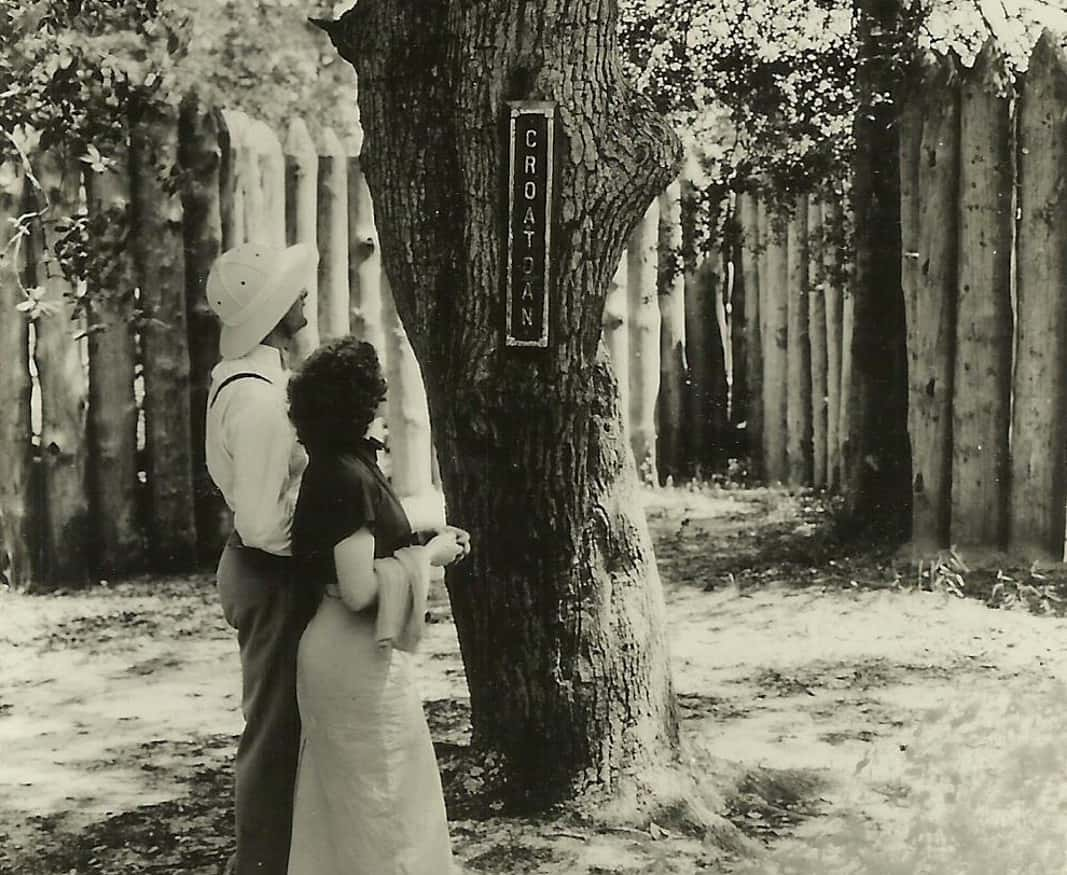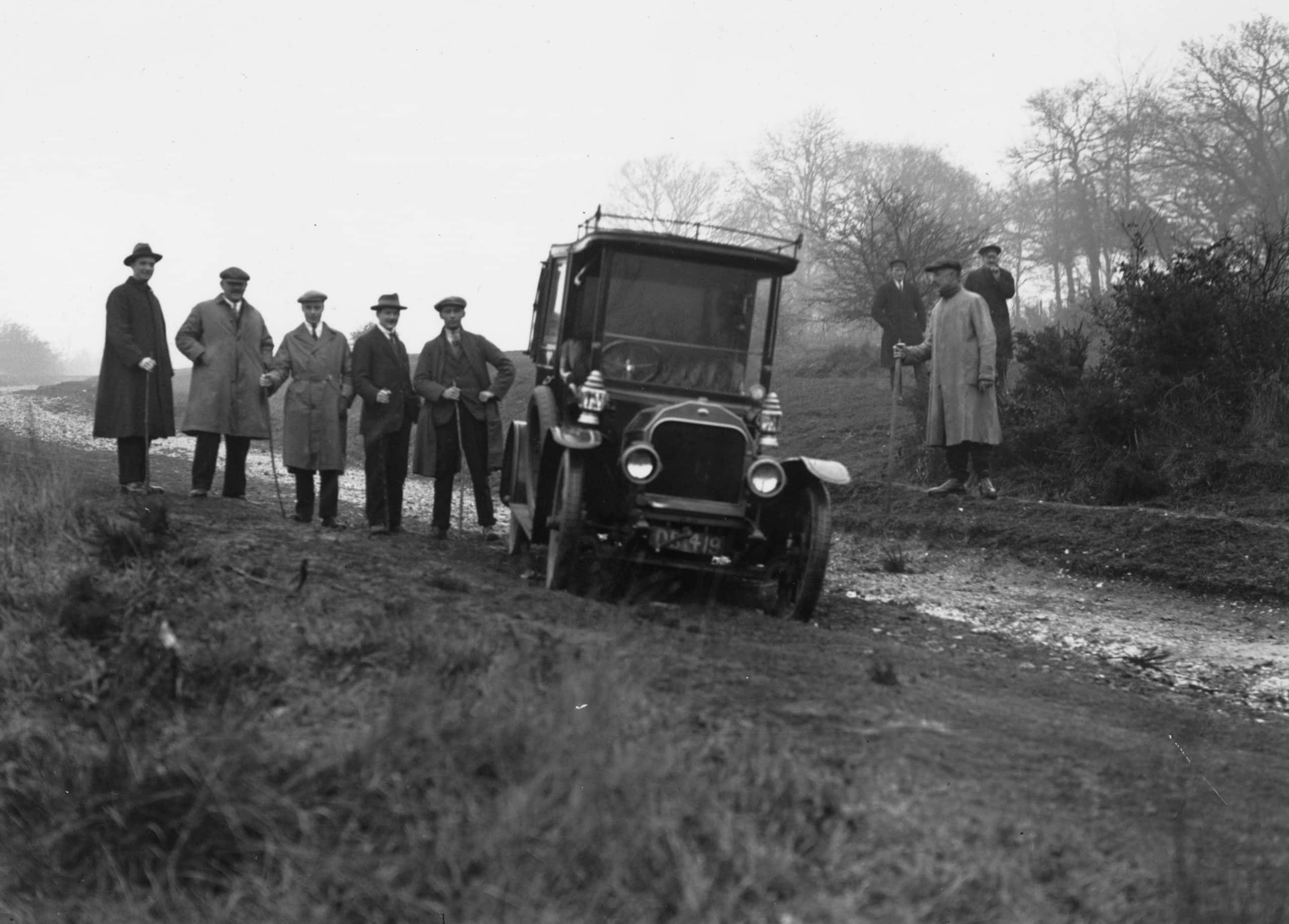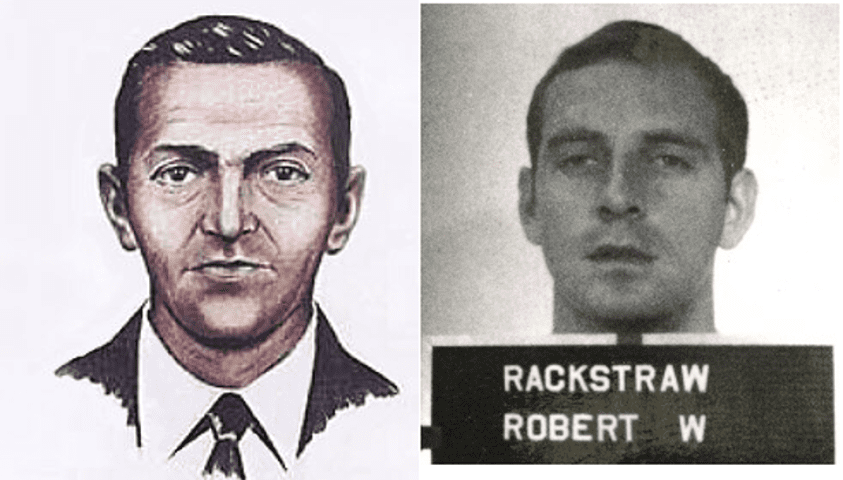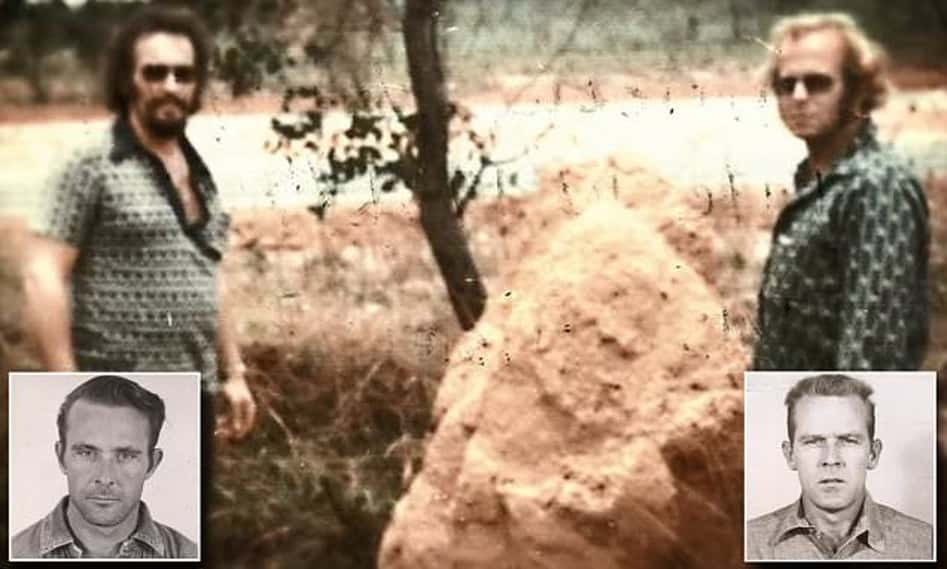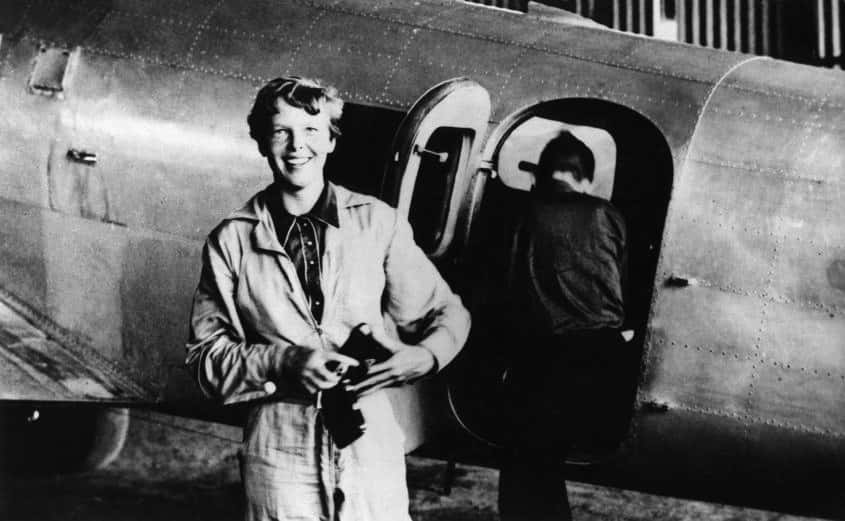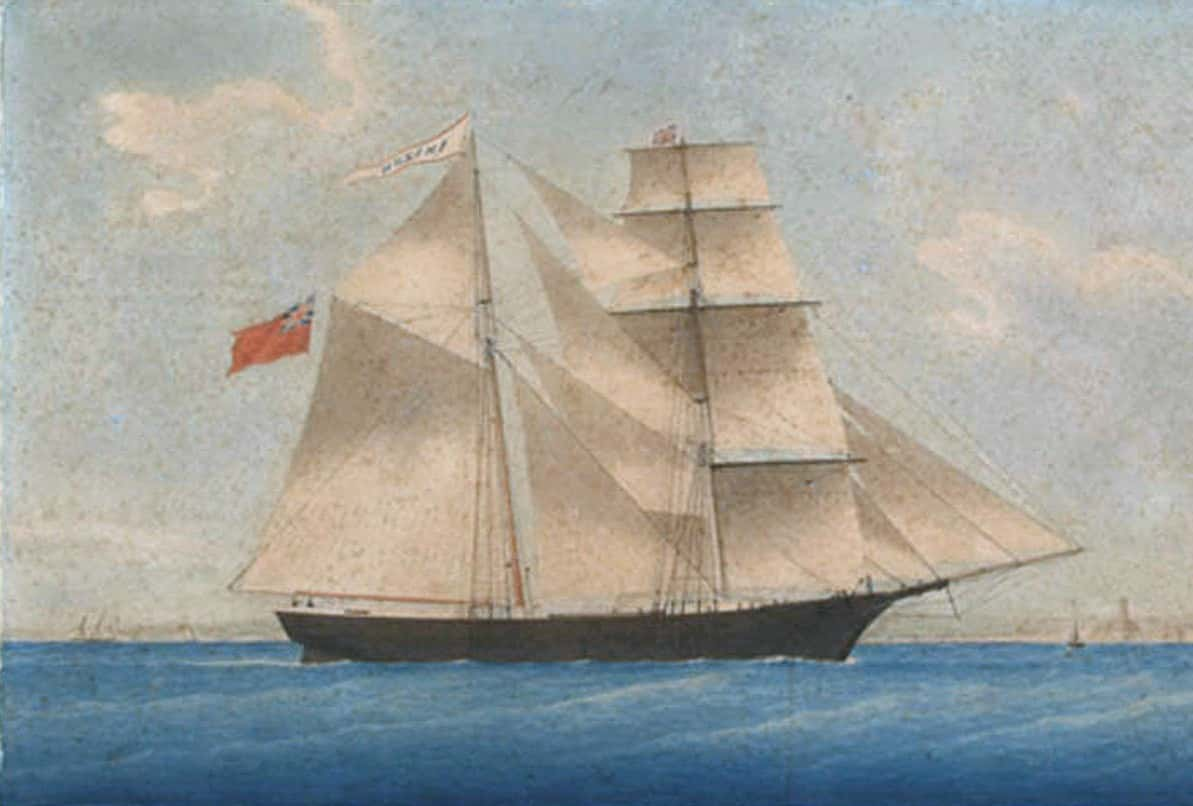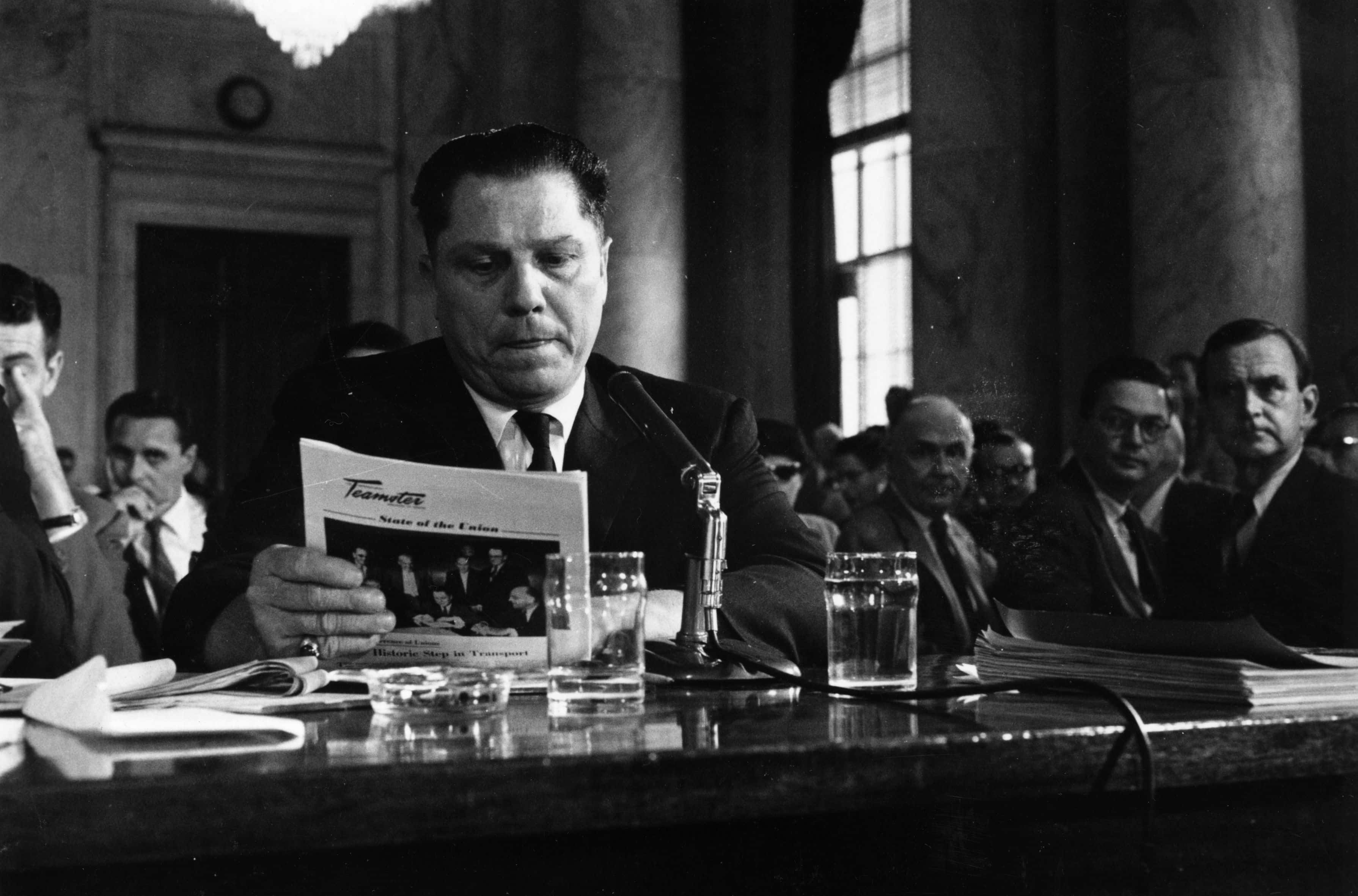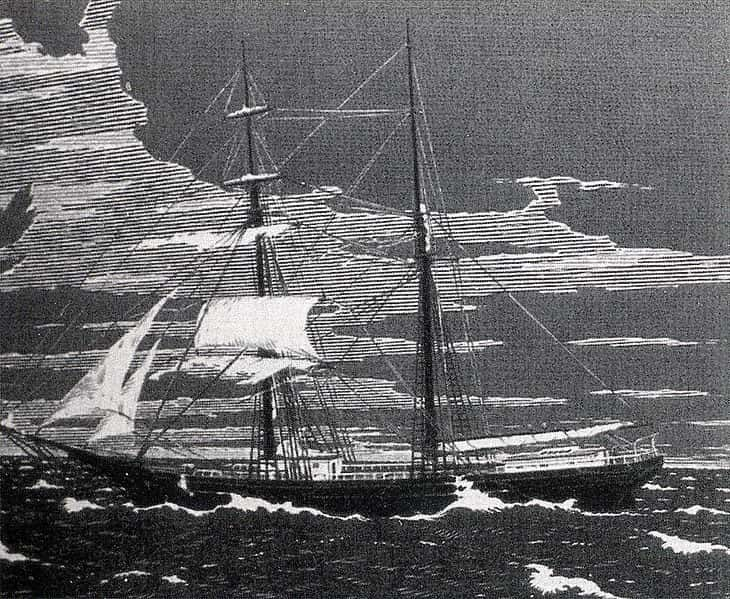History's Most Mysterious Disappearances
Whatever happened to Jimmy Hoffa? Has anyone ever escaped from America’s most impenetrable prison? Is it possible to fake your own death? Where are my keys? Okay—this list won’t help with that last question, but we’ve compiled the most astounding, the most baffling, the most head-scratching facts about strange disappearances—many that remain mysteries to this day. But we can’t guarantee that after reading this list won’t leave you with more questions than you did before.
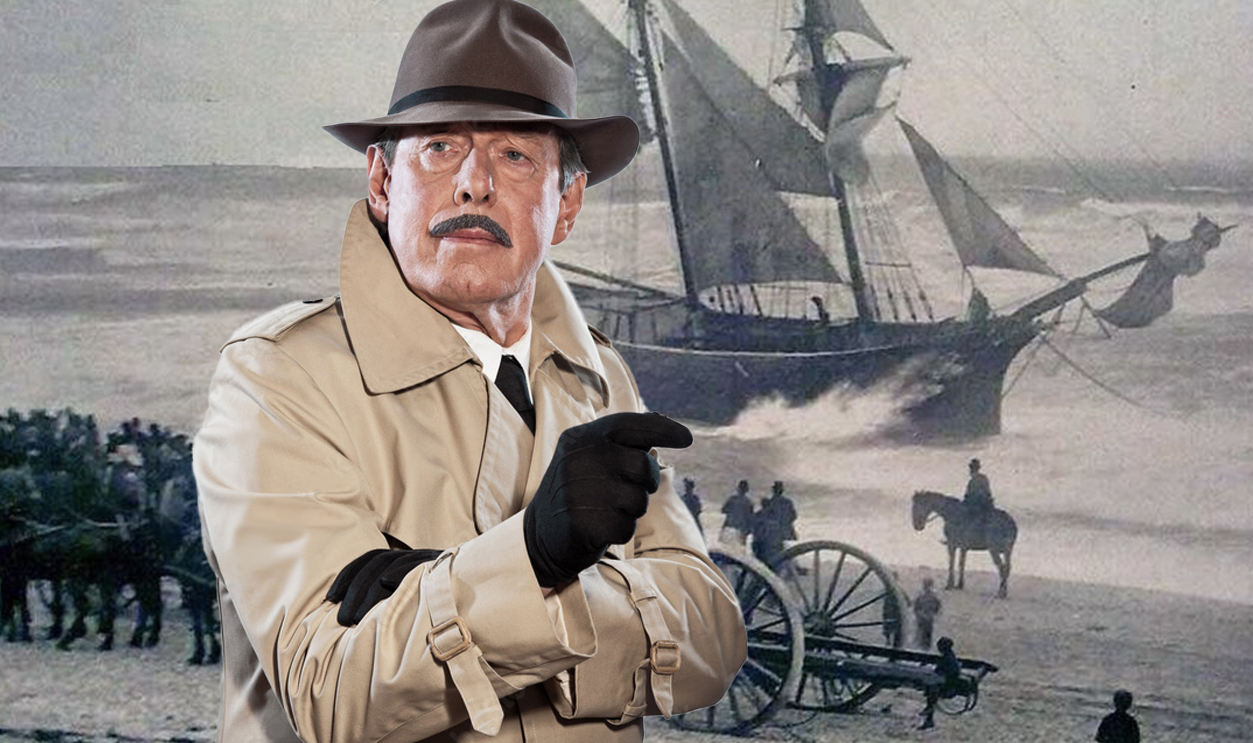
44. "Croatoan"
Led by Governor John White, more than 100 settlers arrived at Roanoke Island, North Carolina in 1587 to establish the first permanent English colony in the New World. White departed for England for more supplies later that year, and when he finally did come back in 1590, nobody was home. The entire colony had vanished without a trace, leaving only a message that read "CROATOAN" etched into a post and the letters “C-R-O” carved into a tree. Archaeologists have suggested that the colony was assimilated into the native tribes; "Croatoan" was the name of both an island and a tribe in the area.
43. Disappear Like Water
The first recorded mysterious disappearance is that of Lao Tzu (also spelled Lao-tse or Laozi). A figure of legend, the details of his actual life are unclear and unverifiable. Lao Tzu is credited as the founder of Daoism (also spelled Taoism) and writer of the religion’s foundational text, the Tao Te Ching and its central tenet, wu wei, which can be translated as “not doing anything,” “not forcing,” or “flowing with the moment.” His teachings favored inner knowledge and balance with the universe, thus he never established any formal school and was anti-authoritarian. It is said that as he saw his society become more and more corrupt, he dressed as a farmer and rode across the border on a water buffalo, never to be seen again.
42. Maybe The Tooth Fairy?
We’ve heard of losing one’s baby teeth, but this is ridiculous. In 1981, the National Museum of American History discovered that a set of George Washington’s false teeth were missing from their collection. The teeth of America’s first President were on loan from the Maryland Dental School and had been kept in a locked storage room at the time they disappeared. The bottom plate dentures showed up a year later, in an employee-only area, but the top half remains missing to this day. Contrary to popular lore, Washington’s dentures were not wooden, but instead were made of gold and ivory—this means that, beyond their historical value, the teeth had material value and may have been melted down to be sold as scrap.
41. Queen Of Mystery
In 1926, the queen of mystery herself, Agatha Christie, mysteriously disappeared. Christie’s mystery novels featuring detectives Hercule Poirot and Miss Marple have made her the world’s best-selling author of fiction, according to estimates that have her neck and neck with William Shakespeare. She was already absurdly famous when she drove away from her home one evening and didn’t return. Police at first suspected her husband of foul play—he had only days earlier confessed his love for another woman. Over 1,000 police officers and 15,000 volunteers were put on the case.
40. Mystery Solved
Eleven days after her mysterious disappearance, Christie was discovered in a hotel several hours away, where she had checked in under the name of her husband’s lover. While it has been suggested that she intended to fake her own death and frame her husband, Christie’s biographers have since come to the conclusion that the trauma of her husband’s infidelity sent her into a depressive episode, as after she was found she claimed to have been suffering from amnesia during her disappearance. Christie recovered and went on to write many more mystery novels.
39. Mysterious Re-Appearance
Grand Duchess Anastasia Nikolaevna of Russia, daughter of Tsar Nicholas II, the last sovereign of Russia, was presumed to have been executed along with the rest of her family on July 17th, 1917 during Russia’s Bolshevik Revolution. Rumors of her escape circulated, and even though remains presumed to be hers have been found, skeptics and conspiracy theorists still surmise she may have escaped. What’s more, several women have come forward over the years claiming to be the deceased Duchess. The most famous was Anna Anderson, who surfaced in 1920. She devoted her life to a lengthy legal battle trying to prove her “identity,” which became the longest-running court case in German history, from 1938 to 1973. She was never able to establish her identity as Grand Duchess Anastasia.
38. Not Subtle
Of all things, you’d think a 42-ton (38-metric-ton) sculpture couldn’t disappear without someone noticing, but that’s just what happened to Equal-Parallel: Guernica-Bengasi, a 1986 sculpture by Richard Serra. The piece was deemed too large for the Madrid museum it had been in after a renovation and was moved to storage, but 15 years later, when the museum’s new director went to retrieve it, the giant sculpture was nowhere to be found. No record of the sculpture—or the massive blocks of steel the sculpture was made of—could be found. Despite the mix-up, Serra graciously agreed to make a new version of Equal-Parallel: Guernica-Bengasi for the museum, only charging them for the cost of fabricating the copy.
37. Mystery Of The Missing Keys
Do you find yourself misplacing everyday objects like keys, your phone, important letters or papers, etc.? Forgetfulness is an expected part of getting older, but if it becomes a problem it may be best to see a doctor. Constantly losing one’s keys, or losing other items, could be a sign of an age-related neurological condition like Alzheimer’s disease.

History's most fascinating stories and darkest secrets, delivered to your inbox daily.
36. Infamous
The case of D.B. Cooper has fascinated American mystery-hunters for decades as one of the most infamous heists in US history. On November 24th, 1971, a man calling himself “Dan Cooper” boarded an airplane in Portland bound for Seattle. After drinking a scotch and soda and making polite banter with other passengers, he informed the flight attendant that he had a bomb, and requested $200,000 and four parachutes in exchange for the plane’s passengers, now hostages, when they reached their destination.
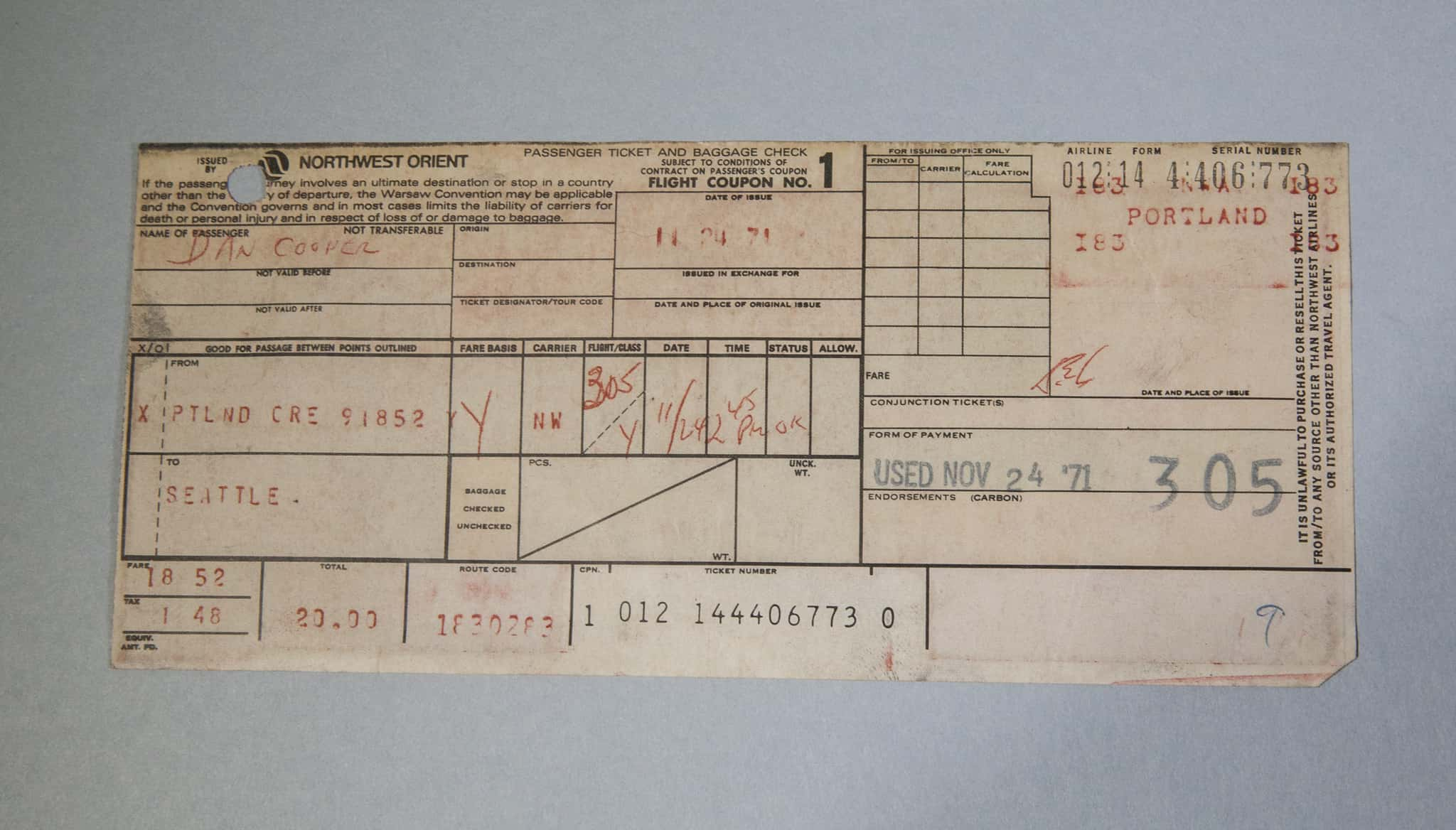 Flickr, Federal Bureau of Investigation
Flickr, Federal Bureau of Investigation
35. Hijacked
After the FBI met his demands, Cooper instructed the pilot of the hijacked plane back into the air. While the skeleton crew of the airplane was in the cockpit, Cooper opened the air locked door of the plane and jumped out, never to be seen or heard from again. Even though the FBI conducted a nationwide manhunt, no trace of Cooper was ever found, and only a few bills from the ransom he was given turned up. Cooper must have known the ransom would have been “bait money,” that is, numbered and easy-to-trace bills, so it’s unlikely he ever meant to spend the money.
34. Without A Trace
In 1980, a Washington teenager discovered bundles of cash in a river, which were confirmed to be from the D.B. Cooper ransom. The bills were deteriorated, but no theory has been able to explain their condition or location, and while it’s thought that Cooper perished after his jump from the airplane, no definitive evidence has ever been found. The case has captivated and confounded both law enforcement and amateur sleuths since Cooper’s mysterious disappearance almost 50 years ago, with new possible evidence and theories—often from people suspecting their own family members—still being put forth. As time passes, it looks like we may never know the truth about D.B. Cooper
33. Based On A True Story
You may have heard of Solomon Northup from the 2013 movie 12 Years A Slave, based on his life and memoirs. The story chronicles the life of Northup beginning in 1841 when he was living in New York state, a free man with a family. He was attacked, captured, and taken to New Orleans, where he lived as a slave for twelve years until he was able to regain his freedom. In 1853, he returned home and became an abolitionist advocate, speaking publicly and becoming involved in the Underground Railroad to help other escaped slaves find freedom. What the memoir and the film don’t tell you is that after 1863, Northup mysteriously vanished after struggling with money and losing his property.
 12 Years a Slave (2013), Regency Enterprises
12 Years a Slave (2013), Regency Enterprises
32. Reunited
The whereabouts of Solomon Northup may have been unknown, but during the publicity surrounding the film, The Hollywood Reporter rounded up Northup’s descendants. 47 of his grandchildren spanning five generations were interviewed and photographed for an editorial in the magazine highlighting Northup’s lasting legacy.
 12 Years a Slave (2013), Regency Enterprises
12 Years a Slave (2013), Regency Enterprises
31. The Great Escape
Some disappearances are downright triumphant. It’s hard not to root for the underdog during a prison break, and the story of “The Great Escape from Alcatraz” is one of the most fascinating of those stories. Frank Lee Morris, plus brothers John and Clarence Anglin, vanished from their cells in the island prison of Alcatraz on June 11th, 1962. The prisoners were never caught, though an unidentified body washed up on shore nearby shortly after. It’s not known whether the trio managed to survive to find freedom—but the family of the Anglins has never had any doubt the brothers were alive and well.
30. Ingenious Plan
After their escape was discovered, Alcatraz authorities pieced together the brilliant and complex plan that enabled Morris and the Anglins to escape. The trio used crude handmade tools made of pilfered spoons and saws to burrow through the prison walls and left behind lifelike dummy heads resembling themselves, which were made of papier-mâche, painted flesh-colored with prison art kits and decorated with human hair from the barbershop. With such attention to detail, it’s no wonder the three convicts were able to elude detection and successfully escape from one of America’s most impenetrable prisons.
29. Vanished
Picnic At Hanging Rock is a 1975 Australian film based on a historical novel of the same name. Both film and book explore the story of female students from an Australian school in 1900 who were taken on a field trip picnic, where two of them vanished without a trace. In the novel, the girls are never found. Despite featuring Hanging Rock, a real place, and incorporating many details, the story is thought to be fiction, though author Joan Lindsay has been cagey about whether it is in fact based on truth. Said Lindsay, "Well, it was written as a mystery and it remains a mystery. If you can draw your own conclusions, that's fine, but I don't think that it matters.”
The story has certainly captivated public attention in Australia. Tourism to the area described in the book continues to this day, and a museum has been built on the site. In 1980, a book called The Murders at Hanging Rock was published speculating as to what really happened on that fateful, if fictional, day.
 Picnic at Hanging Rock (1975), The South Australian Film Corporation
Picnic at Hanging Rock (1975), The South Australian Film Corporation
28. Wanderlust
In 1931, an American teenager named Everett Ruess set off on a donkey through the wild country of Arizona, New Mexico, Utah, and Colorado, looking to eschew society and commune with nature. He adopted the name “Nemo,” a reference to Jules Verne’s isolationist hero in Twenty Thousand Leagues Under The Sea. For three years, Ruess explored the American West, learning Navajo and writing letters about the beauty of the unexplored country.
27. One With Nature
In 1934, Ruess departed Escalante, Utah with supplies and two donkeys. His camp was discovered soon after, with the animals were in good health, but Ruess was never seen again. Mystery lovers suspect he may have fallen off a cliff or drowned in a flash flood, though there are some who suspect that Ruess adopted a new identity and lived out the rest of his days in obscurity. Jon Krakauer chronicled Ruess’s journeys in his 1994 book, Into The Wild, along with those of another wanderer, Chris McCandless.
26. Into The Wild
The story of Chris McCandless as told by Jon Krakauer in Into The Wild begins not with a disappearance but a discovery. In September 1992, the body of an unidentified man was found inside an abandoned bus deep in the Alaska wilderness. The body was finally identified as 24-year-old Chris McCandless, of Washington, DC, who had set off on a journey several months earlier but who hadn’t spoken to his family in over two years. Krakauer pieced together the story of McCandless, who discarded social norms in favor of living free and self-sufficient in the wilderness, despite the dire consequences.
25. Modern-Day Thoreau
Krakauer’s book, Into The Wild, became a blockbuster and McCandless was hailed as a hero for trying to live a life of freedom by his own ideals. McCandless was heavily influenced by Thoreau, who preached self-sufficiency and freedom from society. McCandless brought only a ten-pound bag of rice with him into the wilderness, surviving by eating roots and seeds of wild plants, and by hunting moose, grouse, squirrel, and other creatures and birds. At the time of his departure, he told no one where he was going and lived completely free from human contact.
 Into the Wild (2007), Paramount Vantage
Into the Wild (2007), Paramount Vantage
24. His Own Demise
McCandless was also scorned and harshly criticized by those who thought it cruel to abandon his loving family, and irresponsible to head into the Alaska wilderness so ill-prepared and uneducated about the realities of living off the land. McCandless survived over 185 days in the Alaskan wilderness but eventually succumbed to starvation. The book remains divisive to this day. A fictionalized film version of Into The Wild was released in 2007.
 Into the Wild (2007), Paramount Vantage
Into the Wild (2007), Paramount Vantage
23. Search For The Lost City
The story of Percy Fawcett’s disappearance was also made into a film in recent years, called The Lost City of Z. The film is based on David Grann’s book of the same name, which charts Fawcett’s explorations deep into the Amazonian jungle, searching for a lost city he’d heard about while mapping the border between Brazil and Bolivia for the Royal Geographical Society. The lost city was said to have been the ruins of an ancient complex civilization. Fawcett made seven mapping expeditions between 1906 and 1920, and one solo expedition in 1920 specifically to look for the city’s ruins.
 The Lost City of Z (2016), Amazon Studios
The Lost City of Z (2016), Amazon Studios
22. Swallowed By The Jungle
In 1925, Fawcett made a final expedition to the jungle in Brazil to search for a lost city he called “Z”. He brought with him his eldest son, Jack. The pair mysteriously vanished and were presumed murdered or dead by natural causes. Fawcett’s compass was found in 1927, but neither their remains nor the lost city they searched for has been found.
 The Lost City of Z (2016), Amazon Studios
The Lost City of Z (2016), Amazon Studios
21. Right Before Our Eyes
On April 8, 1983, magician David Copperfield made the Statue of Liberty disappear. Or, at least he made it appear to disappear. The televised performance dazzled a live audience who were mystified when a raised curtain was dropped, revealing the statue to have vanished. But how did he pull it off? We could tell you, but it would ruin the mystery.
 Public Domain Pictures
Public Domain Pictures
20. The Mystery Revealed
Okay, we’ll tell you. Copperfield didn’t actually make the Statue of Liberty disappear—he just moved it out of sight. Or rather, he moved the audience. When a curtain between two pillars was raised, obscuring the statue, the platform holding the audience rotated slightly so that when the curtain was dropped again, the statue would be blocked by one of the pillars, out of sight. A configuration of spotlights that shone on the statue was replicated, so the sight seen by the audience as they looked between the pillars made it appear as though the statue had disappeared. Likewise, radar showed nothing in front of them — because the actual statue was now off to the side. Clever, huh?
19. DOP
A vanishing Statue of Liberty may dazzle, but losing everyday objects like keys or eyeglasses when you feel like you just saw them has the power to deeply frustrate and confound. If you find everyday objects disappearing and reappearing, or even teleporting, and you also live in a haunted house and/or UFO hotspot, you might be a victim of “Disappearing Object Phenomenon.” Depending on which conspiracy website you read, the phenomenon can be attributed to poltergeists, aliens, or trans-dimensional teleportation. Forgetfulness, or Illuminati conspiracy? You decide.
18. Around The World
One of the most famous mysterious disappearances is that of Amelia Earheart, whose aircraft vanished in July 1937 as she attempted to circumnavigate the globe. Earhart and her navigator Fred Noonan departed from Miami in a Lockheed Electra airplane and made it all the way to Papua New Guinea before mysteriously vanishing on their way to Honolulu.
17. Into Thin Air
There has been much speculation in the 70+ years since Earhart’s disappearance, and the search for her airplane continues to this day. Artifacts and human remains found on islands near Japan and in the South Pacific have been attributed to Earhart and Noonan, but no conclusive evidence of the pair has been verified. Their plane likely crashed into the Pacific Ocean and sank, though many conspiracy-theorists believe otherwise.
16. Still A Mystery
Even in years as recent as 2017, evidence of Earhart’s crash and/or survival has been scrutinized. A photograph showing an American man and woman in the Marshall Islands was reported to perhaps be of Earhart and Noonan, though it is far from conclusive. Other theories are that Earhart was captured and interned by the Japanese, that she was abducted by aliens, or that she completed her flight in secret and simply changed her name and moved to New Jersey. Why pick New Jersey over a balmy tropical South Pacific island? Maybe that’s the real mystery.
15. A Faked Death?
William Cantelo, an inventor, disappeared after developing a new type of machine gun. When his sons saw a similar gun on the market, they thought that they’d found him, but they were shocked to discover that although the inventor bore a striking resemblance to their father, he had proof of his origins. The whole story is a doozy. After Cantelo's disappearance, his sons hired a private investigator who traced Cantelo to America and noticed a large sum of money missing from his bank account.
When the brothers found a man calling himself Hiram Maxim, who was selling a “Maxim Gun” almost identical to that of their father’s, they thought they’d solved the case. A photograph of Maxim closely resembled their father. The pair assumed their dad didn’t want to share the profits from his invention and took off mysteriously—but did he? They staged an ambush of Hiram Maxim when the inventor made a tour of Britain, expecting to surprise their father. But was it the same man? Maxim had documents “proving” that he was born and had grown up in the United States—including census records and church registrars—and claimed that there was an impostor in the USA claiming to be him.
The mystery of William Cantelo was never solved. Did he sell his patent to Maxim? Did the two identical men invent an identical gun at the same time? Maxim never allowed the two boys to visit him again, though he did relocate to the UK. Hiram Maxim became a British subject in 1899 was knighted in 1900. William Cantelo, on the other hand, was never heard from again.
14. Stranger Than Fiction?
The mystery of the Mary Celeste might have been forgotten to history had it not been for the imagination of Sir Arthur Conan Doyle. No, he didn’t put Sherlock Holmes on the case, but a short story he published offered a fictionalized first-person account of a crewman. His short story was published anonymously, and some details were changed (the name of the ship was given as “Marie Celeste,” and in the story, the boat is found intact, while in reality, a lifeboat was missing). The short story was mistakenly assumed to be true, and even reprinted as truth in the Boston Herald.
13. How To Disappear
Want to collect on your life insurance policy without having to actually die? Or avoid a prison sentence? Or just get away from it all? Faking one’s death is an answer to all these problems—just not a very good one. Known asse “pudocide,” a new book by Elizabeth Greenwood, called Playing Dead: A Journey Through the World of Death Fraud looks at the various ways to fake your own death, and why you probably won’t succeed. Although in the book she notes that if there are any successful cases, you would, of course, never know it.
12. Hard To Pull Off
Of course, if there is anything fishy about a “death,” insurance companies will investigate fully before paying out on a policy, and law enforcement will be watching closely to make sure the deceased doesn’t mysteriously resurface. If you’re planning to fake your own death, take account of the fact that you’ll likely never be able to contact your family or friends ever again—this alone makes it an unappealing choice. In addition, unless you have an iron-clad new identity to assume, it will be difficult to open a bank account, rent an apartment, or cross the border. All in all, it sounds like a pretty unglamorous existence even if you’re not caught.
11. Well-Researched
How did Elizabeth Greenwood prepare to write Playing Dead: A Journey Through the World of Death Fraud? By faking her own death. She paid a fixer in the Philippines, who had a government employee issue her a death certificate stating she’d been killed in a car crash. She described the experience of holding her own death certificate as “very, very chilling”—what an understatement.
10. Pseudocide Capital Of The World
Greenwood’s experience in the Philippines wasn’t unique—the nation has become a mecca for those looking to be declared dead without having to die. For the low price of $500, you can purchase a “death kit,” which includes an unidentified cadaver to pass off as yourself, plus legal documents including a death certificate. Motives are often romantic (i.e. to get out of a marriage), legal (to avoid a prison sentence), or financial (to get out of debt). Greenwood’s book states there was a sharp uptick in the number of fake deaths after the 2008 financial collapse.
9. Gone Like Hoffa
“Jimmy Hoffa” is practically synonymous with “mysterious disappearance”, though unlike Amelia Earhart, his disappearance was almost certainly due to foul play. Hoffa served as President of the International Brotherhood of Teamsters, one of the largest labor unions in North America from 1958 to 1971, and had proven mob connections. The mafia was suspected of ordering the hit, and Hoffa’s remains were rumored to have been buried under Giants Stadium in New Jersey.
8. Mob Rule
Hoffa’s presidency over the Teamsters’ union saw the labor group become more powerful than ever, though his tactics were hardly commendable. Hoffa was convicted of jury tampering, bribery, and fraud at two trials, in 1958 and 1961. Hoffa had close ties to the mob, so when he vanished in 1975, the mob were the first suspects. However, the FBI had discovered two weeks prior to his disappearance that millions of dollars were missing from a union pension fund—so perhaps he vanished of his own accord. Searches of the ground under Giants Stadium have never shown any trace of human remains, and the mystery endures to this day.
7. Missing Moolah
Losing a $20 bill is upsetting enough, and hard to do. So it’s jaw-dropping that the United States government lost a whopping $6.6 billion in Iraq after the Gulf War. The misplaced money is presumed stolen and came not from taxpayers (thank goodness) but from a special fund set up with money withheld from the Iraqi government by the Federal Reserve Bank of New York during economic sanctions.
6. International I.O.U.
The money was flown into Iraq as cash, in blocks of $100 bills, and presumably, somebody (with very strong arms) carried it off unnoticed. A total of $12 billion was air-lifted into Iraq on military cargo planes by the Bush administration. In 2005, a series of hearings on fraud and waste during Iraqi post-war reconstruction was held, at which time the theft was discovered, and in 2011, Iraq threatened legal action against the United States in order to recoup the money. Said Rep. Henry A. Waxman, at the time the head of the House Government Reform Committee, "Congress is not looking forward to having to spend billions of our money to make up for billions of their money that we can't account for, and can't seem to find.”
 Flickr, Center for American Progress Follow
Flickr, Center for American Progress Follow
5. Learn More
If you’ve enjoyed this article and want to learn more, there’s a whole book about strange disappearances. Check out 100 Things You Will Never Find—Lost Cities, Hidden Treasures and Legendary Quests by Daniel Smith for information on objects lost and never found, from the missing panels of the Bayeux tapestry to JFK’s brain. If you look carefully, you might even be able to find it at your local public library.
4. Missing Plane
On March 8, 2014, an airplane flying from Kuala Lumpur to Beijing vanished with 239 passengers and crew members aboard. Despite carrying a flight recorder, or “black box”, the exact whereabouts of the plane—and its passengers was a mystery to authorities. At the time of the disappearance, no reports of bad weather or mechanical difficulties had been registered by the airplane’s crew. In 2015 and 2016, 20 small pieces of debris from the flight were recovered from the water, but the location of the rest of the wreckage is still unknown.
3. Airborne Tragedy
The loss of Malaysia Flight 370 and the 239 lives on board represented the deadliest incident involving a Boeing 777 ever. The cause of the plane’s disappearance is still a mystery, as the only debris found has been off the coast of Africa, far from where it would be expected. Theories have been proposed as to what caused the crash: was it mechanical error, or did the pilot intentionally crash the plane? Was the flight shot down by North Korea, as some have claimed? Unfortunately, the cause of the disappearance is entirely unknown.
2. The Search Continues
A US-based company called Ocean Infinity signed a deal with the Malaysian government in late 2017 to look for the wreckage of Flight 370. The deal will net them $90 million—but only if they find the plane within three months. As it’s unknown what caused the flight to go down, be it mechanical error or human mischief, the families of victims have not been able to gain any closure or financial compensation for their loss.
1. Ghost Ship
It’s always a mystery when a ship disappears, but it’s even more mysterious when only the crew vanishes. In 1872, the British ship Dei Gratia discovered a ship floating unmanned off the Azores Islands in the Atlantic Ocean. The ship was the Mary Celeste, which had departed New York City bound for Genoa, Italy. The ship’s only lifeboat was missing, and one of its pumps disassembled, but the cargo was still intact, along with a six-month supply of food and rations. The last entry in the Captain’s log, dated two weeks before the ship was found, offered no clues.
To this day, no one knows what happened to the crew of the Mary Celeste.
Sources: 1, 2, 3, 4, 5, 6, 7, 8, 9, 10, 11, 12, 13, 14, 15, 16, 17, 18, 19, 20, 21, 22, 23, 24, 25, 26, 27, 28, 29, 30, 31, 32, 33, 34, 35, 36, 37, 38, 39, 40, 41, 42, 43


